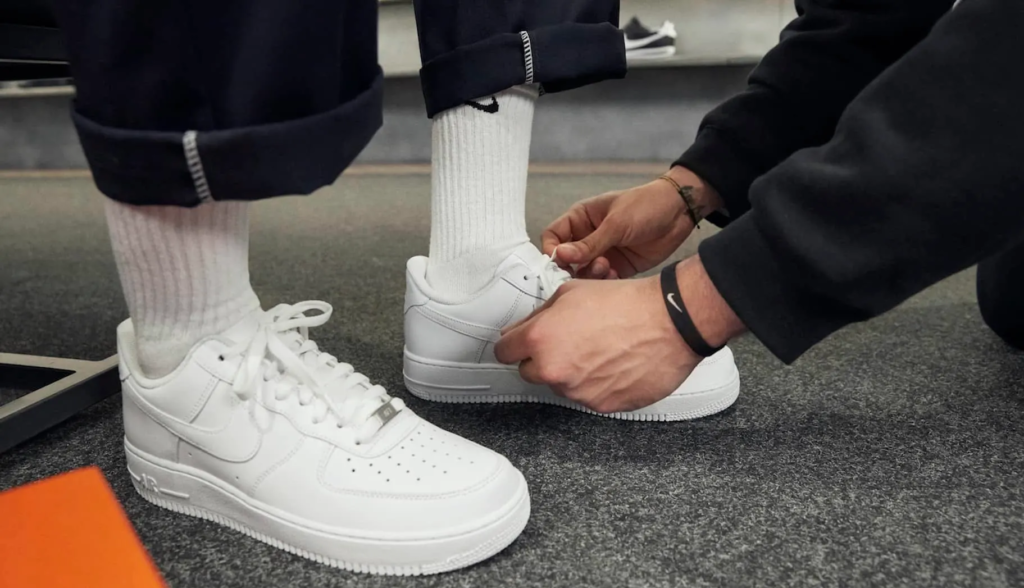
When it comes to footwear, we frequently prioritise fashion and trends over other important criteria like as posture and comfort. However, the shoes we wear have a huge impact on our general health. In this article, we’ll look at how shoes affect posture and comfort, and how the proper or wrong footwear might affect our health.
The Connection Between Shoes and Posture
The style of shoes we wear influences our posture, or how we hold our bodies whether sitting, standing, or walking. Poor posture can be caused by ill-fitting or unsupportive shoes, which can lead to a variety of musculoskeletal ailments over time. When our shoes lack sufficient arch support and cushioning, the alignment of our feet, ankles, knees, and hips suffers.
The Role of Arch Support

Arch support is essential for preserving our feet’s natural curvature. Shoes with insufficient arch support can flatten the arches, causing overpronation (inward foot rolling) or supination (outward foot rolling). Both diseases can cause ligament and muscular tension in the feet, producing pain and contributing to postural issues.
Heel Height and Posture

High-heeled shoes are a common cause of postural changes. When you wear heels, your centre of gravity goes forward, causing your lower back to arch and your pelvis to tilt. This incorrect posture strains the spine, causing lower back pain and discomfort.
Comfort: The Key to Healthy Feet
Everyone, regardless of style preferences, should prioritise comfortable shoes. Uncomfortable footwear can cause a variety of foot-related issues that can have a negative impact on our overall health.
Preventing Foot Pain
Foot pain can be caused by shoes that are overly tight or lack sufficient cushioning, particularly in the heel, arch, or ball of the foot. This pain might develop chronic and interfere with daily activities over time.
Impact on Joints
Ill-fitting shoes can also cause joint problems, particularly in the knees and hips. When the feet are not adequately supported, they can become misaligned and put more pressure on the joints, potentially causing or worsening illnesses such as arthritis.
Choosing the Right Size

Choosing the correct shoe size is critical for comfort. Because feet change with time, it’s critical to get them measured on a regular basis to maintain an appropriate fit. Shoes that are too tiny can create bunions, corns, and ingrown toenails, whereas shoes that are too large can cause blisters and instability.
Tips for Choosing Posture-Friendly and Comfortable Shoes
Now that we understand the impact of shoes on posture and comfort, here are some tips for making better footwear choices:
1. Select Supportive Insoles
Consider using supportive insoles or orthotics if your shoes lack proper arch support. These can help with foot alignment and give additional cushioning.
2. Put on low heels or flats.
While high heels are stylish, strive to restrict your use of them and instead wear lower heels or flats whenever possible. Choose heels with a wider base and a lower height if you must wear them.
3. Select the Correct Shoe Size
Always make sure your shoes fit properly. Regularly measure your feet and avoid wearing shoes that are too tight or too loose.
4. Cushioning should be prioritised.
Look for shoes with plenty of cushioning to absorb shock and lessen stress on your feet and joints, particularly if you participate in high-impact activities.
5. Take into account shoe width
Consider the width of the shoes you choose. Shoes that are overly thin might create discomfort and, in the long run, foot problems.
6. Alter Your Footwear
Wearing the same pair of shoes every day is not a good idea. Rotating your footwear allows your feet to relax and lowers your risk of overuse issues.
7. Try Before You Buy
Before buying shoes, always try them on, ideally later in the day when your feet are little swollen. This will help to guarantee a more precise fit.
Conclusion
Finally, the influence of shoes on posture and comfort should not be disregarded. The appropriate footwear can improve posture, alleviate discomfort, and improve general foot health. When selecting your next pair of shoes, keep in mind that comfort and support should never be traded for style. We may lead a healthier and more pleasant existence by prioritising the health of our feet.
FAQs
Q. Why is arch support important in shoes?
Arch support helps to retain our feet’s natural curve and avoids overpronation or supination, lowering the risk of discomfort and posture issues.
Q. Are high heels bad for posture?
Wearing high heels can cause the body’s centre of gravity to shift, resulting in incorrect posture, greater strain on the spine, and lower back pain.
Q. How can ill-fitting shoes impact joint health?
Improperly fitting shoes can cause foot misalignment, hurting the knees and hips and potentially contributing to joint issues such as arthritis.
Q. Is it essential to prioritize comfort over style when choosing shoes?
Yes, while choosing shoes, comfort should be a top focus, as uncomfortable footwear can contribute to foot pain and long-term foot disorders.
Q. Should I change my shoes? Why?
Yes, rotating footwear relieves your feet from persistent pressure and aids in the prevention of overuse injuries, resulting in better foot health.
Q. Can orthotics or insoles help with posture and comfort?
Yes, supportive insoles or orthotics can enhance foot alignment, improve posture, and add cushioning for comfort.







